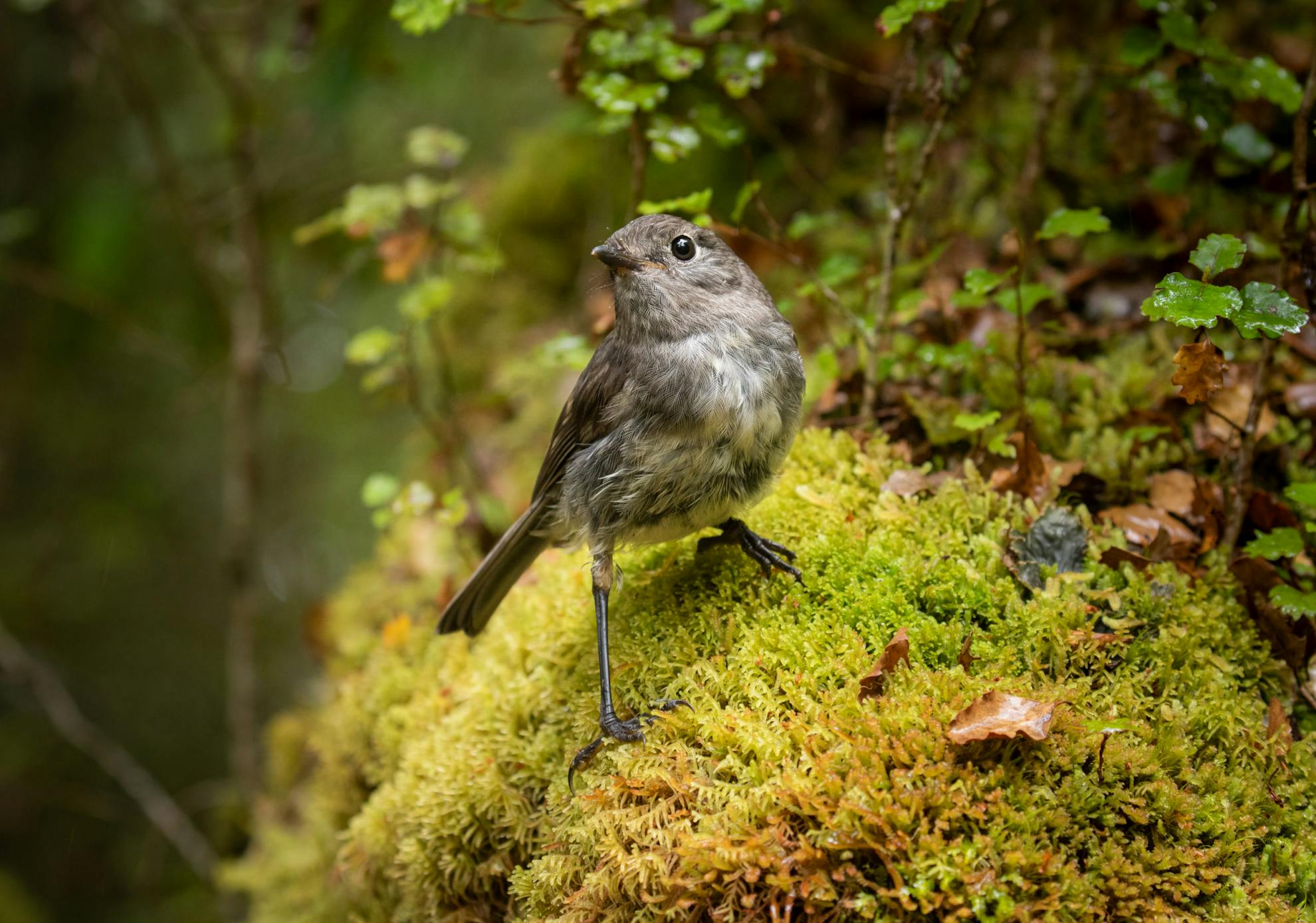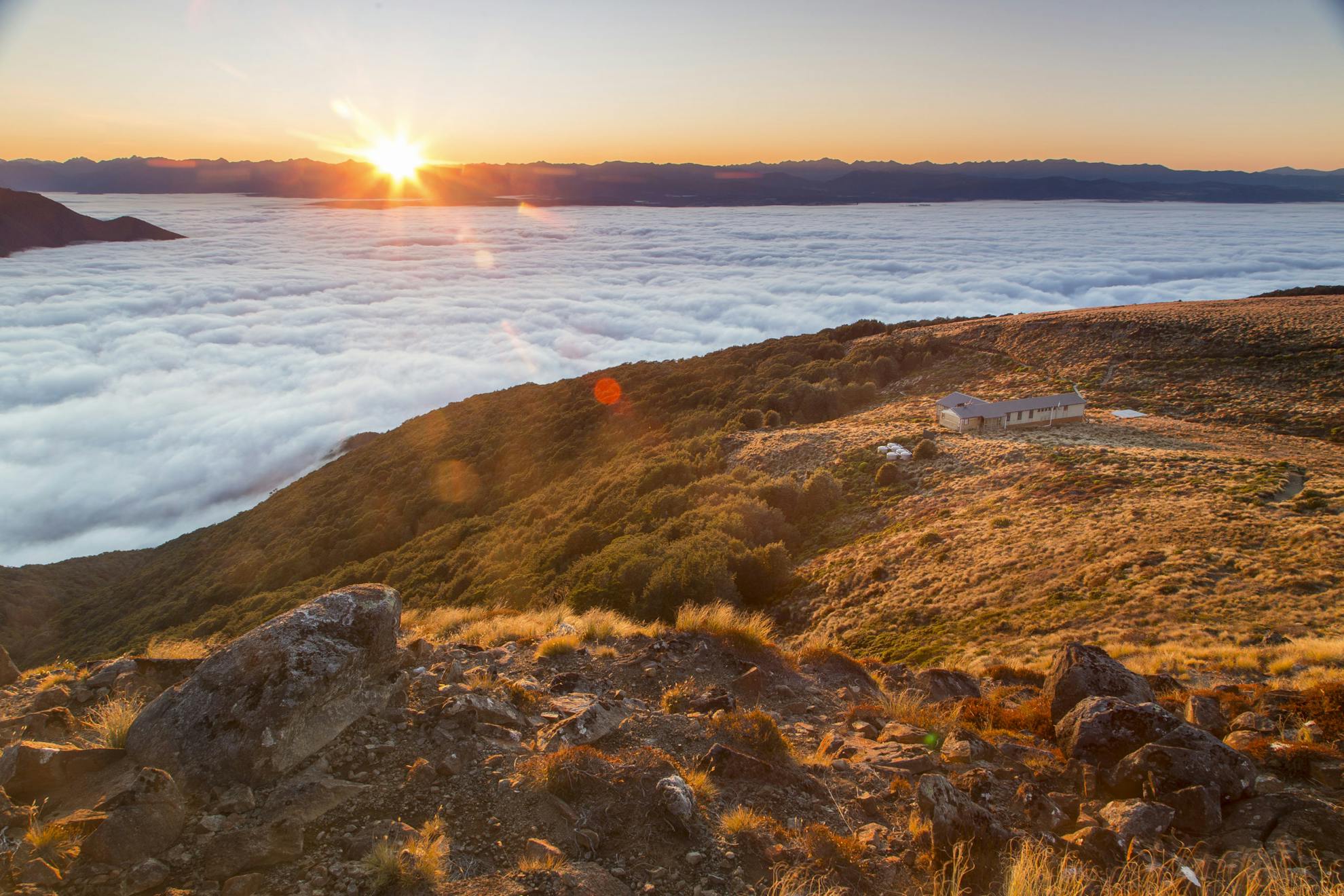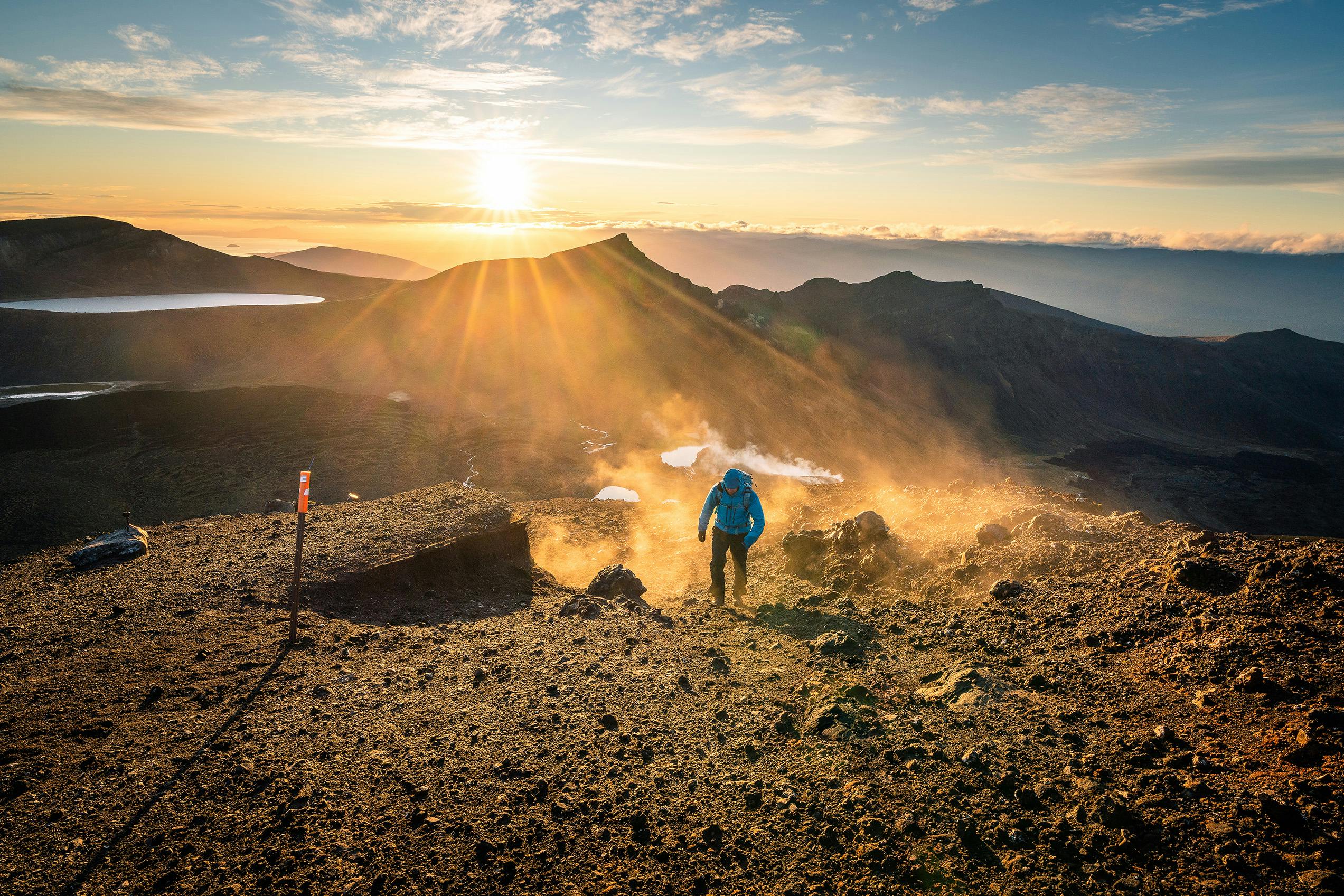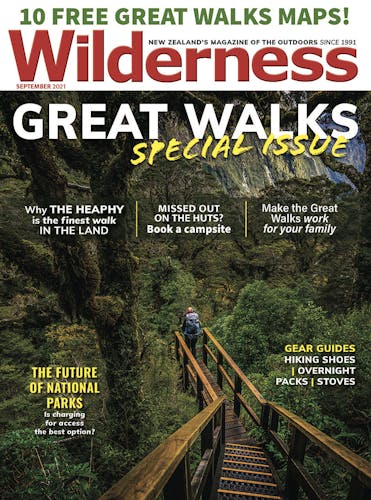Serious trampers may turn their noses up at the Great Walks, but those who do are missing out on some of the most diverse and beautiful landscapes in New Zealand.
Thru-hikers talk often of post-trail depression – an untethered state of withdrawal experienced when the boots come off for the final time, and after several rhythmic months of walk, eat, sleep, wake, repeat, the journey is over. For half of my life, I’ve chased the Great Walks, ticking off one after the other, and I’m not sure I’m ready for the pursuit to end. How am I going to feel when I’ve ticked off the lot?
I was 15 when I walked my first; the stunning Lake Waikaremoana. We drove for five gruelling hours in my school’s sweaty people mover to begin at Hopuruahine Landing. The final few hours were spent gritting teeth on gravel beneath towering podocarps. I remember skidding past two Māori teens riding bareback on dusty horses, rifles slung over their shoulders. We were very far from Orewa College.
We arrived at Whanganui Hut at dusk after two hours of tramping, welcomed by several decapitated deer hung from nearby trees. Inside, boozed hunters were settling into a loud night of celebratory drinking, their gear – and rifles – bomburst across our prospective bunks. Blowflies bounced impatiently across the window panes as our supervisor weighed our options, and no sooner had we put our packs down, we were being shuffled out the door.
The next three hours were a blur. In our haste to get to the next hut, we’d skipped dinner, and my body was crying out for food and rest. I stumbled on heavy legs in the torchlight in what remains to this day my worst ever tramping experience.
So, my introduction to the Great Walks was much less than perfect, but that hasn’t put me off completing another 13 to date (yes, there are double-ups, and no, I haven’t ticked them all off). At their worst, the hallowed tracks are expensive, busy, difficult to book and overly manicured. To tramping purists, they are soulless and shameless cash-grabs that tame wild places or as Joni Mitchell said, ‘pave paradise to put up a parking lot’. But to those sticklers, I say stick to your high roads of mud and matagouri; the Great Walks are for every tramper, and they offer some of the most glorious wilderness in New Zealand. Here’s why.

The wildlife
Predator control is prioritised on the Great Walks – and it shows. Several years ago, I walked a section of the Routeburn Track from the Glenorchy end and the birdlife was astounding. Titipounamu were thick as suburban sparrows, and we were treated frequently to South Island robin, mohua, tomtit, kākā and kea. We were even spoiled with a once-in-a-lifetime tuke/rock wren – much to the envy of my bird-loving friends. Days later, I walked through near-silent forests to Earnslaw Burn, just a few valleys away from the Routeburn. The contrast was confronting, but it illustrates the power of resources and funding. It’s a big country, and only some areas get the benefit of intensive pest control.
On other Great Walks, I’ve been delighted to tick off a who’s who of rare endemic taonga, including whio, powelliphanta snails, long-tailed pekapeka, takahē, and kārearea. If you’re into wildlife, there are few species that can’t be spotted on one of the Great Walks.
Accessibility
By the time I left school, I had safely completed four multi-day tracks – three of which contained alpine sections. What did they all have in common? They were all Great Walks. Though disaster can – and does – occur on Great Walks, they offer a relatively gentle introduction to multi-day hiking in New Zealand. The tracks are well-maintained, and the huts are strategically placed – far enough apart to pose a challenge, but close enough to be achievable and safe for most trampers. During the Great Walks season, rangers are on hand to dispense advice, update the weather and follow up on any latecomers. I’ve seen children and elderly trampers out there enjoying the Great Walks, and for a pastime posing many barriers for participation, this is a wonderful thing.
Camping
I’ve walked sections of the Abel Tasman Coast Track four times, and never once stayed in a hut. Why would you? The weather is mild year-round, the track isn’t demanding, and there is world-class camping just metres from the sand. It’s very possible to have an entire beach to yourself at one of the track’s 19 campsites; you can plan your own adventure, and the only real downside is the weka, who will steal your gear and food at any opportunity.
On the Heaphy Track, I camped all but one night of my journey. I’ll admit the sandflies at Heaphy Beach had me partially regretting this decision, but having takahē pecking around my tent and falling asleep to the sound of kiwi at Gouland Downs campsite more than made up for the bites.
Camping is one of the best-kept secrets of the Great Walks, and though it’s not possible on all tracks (the Milford and Paparoa tracks are hut only), it will save you money and in some cases enhance your experience. It’s also a great option for those who miss out on hut bookings. (At the time of writing, DOC reported that 95 per cent of campsites were still available for the 2021/22 season. Just 45 per cent of bunks remained bookable).

Huts
The Great Walk huts are a cut above. At Tīeke Kāinga, the marae hut on the Whanganui River Journey, weary paddlers are welcomed by the iwi with an unforgettable pepeha and waiata – something visitors won’t find anywhere else. On the Tongariro Northern Circuit, Mt Ngauruhoe is framed in all of its glory by Waihohonu Hut’s grand windows. With its cavernous communal living space and sun-tracking decks, this could be the most luxurious DOC hut in the country. Down south, you’d do well to find a more stunning abode than the Kepler Track’s Luxmore Hut, perched on a sea of tussocks at 1085m.
The flipside of such gorgeous huts is the price. On DOC’s more popular Great Walks, trampers can pay up to $78 for one night. And while you do tend to get good insulation, gas in the kitchens and flush toilets (which are clean, I must add), the bunk mattresses are no different to a standard hut. All things considered, it’s an expensive night out, but I can understand why the price is so high, and I’m willing to pay it to help maintain some of Aotearoa’s precious places. But the bargain hunter in me craves a cheaper option, which brings me to my next point.
Diversity
If the 10 Great Walks are the only tramps you ever walked in Aotearoa, there are very few landscapes you wouldn’t experience. In the North Island, trampers can walk amongst the desolate plains and ominous volcanoes of the Tongariro National Park and the lush rainforests of Te Urewera. Then there is the Whanganui River Journey which offers an adventure quite unique to New Zealand – an opportunity to safely guide yourself for five days through canyons and rapids, camping on the river banks along the way.
In the south, the Abel Tasman, Heaphy and Paparoa tracks pull the coast into focus, each with their own twist of mountain-meets-sea scenery. Fiordland boasts the Kepler, Routeburn and Milford tracks, a playground of mountain passes, marvelous tops and more greenery than a Kings Plant Barn, and Stewart Island’s Rakiura Track offers a quieter shade of tramping and a chance to see kiwi during the day.
Repeatability
I’ve walked Tongariro Northern Circuit three times now, and I’m sure I’ll do it again. In doing so, I’ve learned the beauty of revisiting multi-day tramps – lightning really can strike in the same place twice in such a changeable environment, making every trip remarkably different.
I’ve been so cold on the crossing section that my stiff fingers couldn’t open a zip and the gale-force winds whipped icy sleet under my hood. Almost exactly two years later, I walked in a shirt and shorts in brilliant sunlight. Each time I visit Abel Tasman, I camp at a new beach and get to know the national park a little more intimately. On the Routeburn, I have explored beyond the track into the Valley of the Trolls to get a new perspective on Lake Harris, and I look forward to re-walking the Routeburn and Kepler tracks back to back in Easter 2022. With spots this beautiful, how could one ever be bored?








